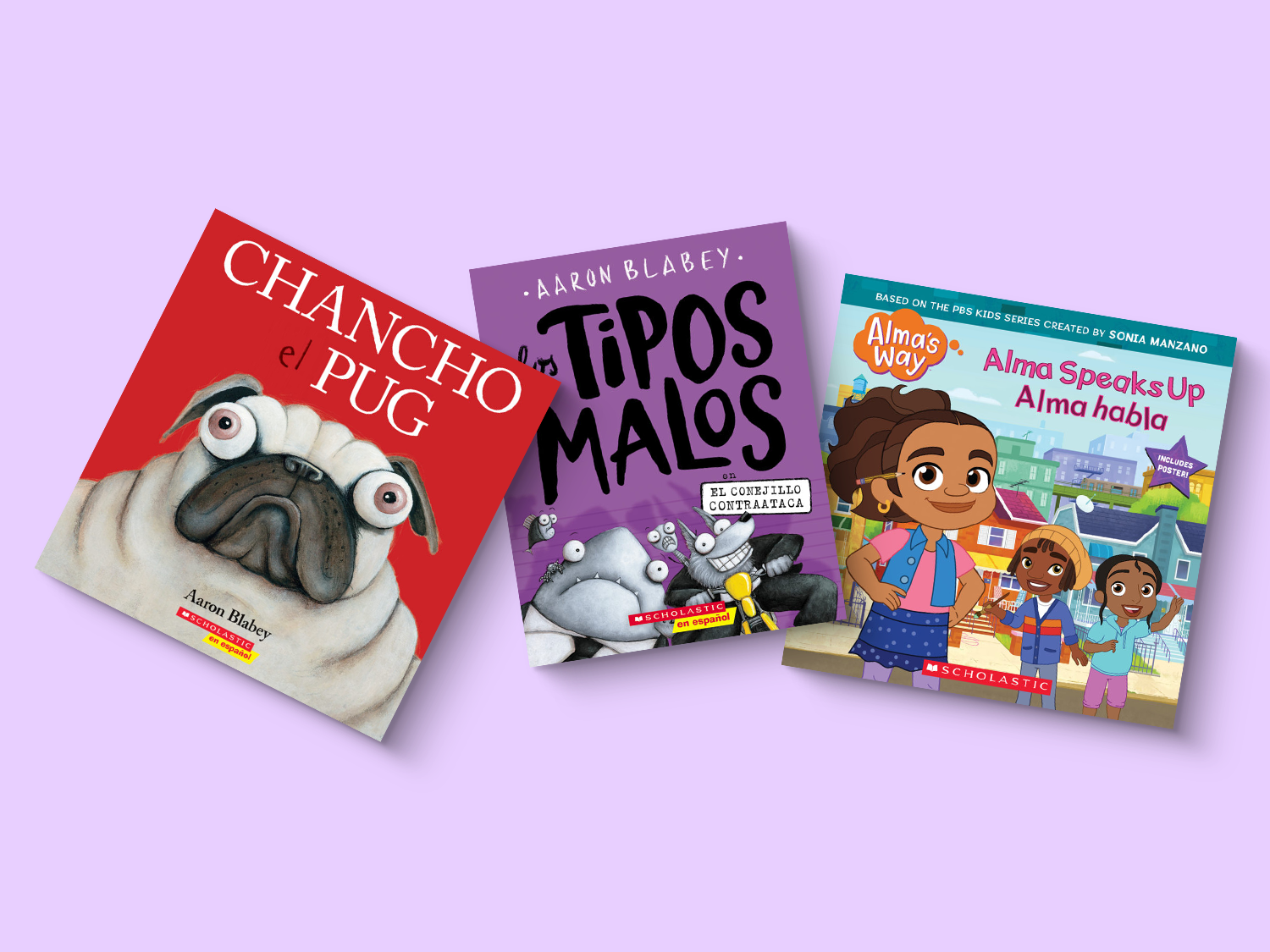3 Easy Ways to Use Bilingual Books in Every Classroom
Using bilingual books in the classroom can enhance the reading experience and grow the vocabularies of all readers.
According to the National Center for Education Statistics, around 10 percent — or more than 5 million —public school students in the United States are English language learners. These students come from diverse backgrounds and bilingual homes, and more than 75 percent of them are Spanish-speaking.
Scholastic offers a variety of books for English language learners, Spanish-speakers, and bilingual readers of all ages.
Bilingual literature not only supports students in their dominant language, it can also be used to grow and enhance the reading experience of all readers. Below are three easy ways to use bilingual books in your classroom.
1. Practice Context Clues
There are many fantastic books that are written in both Spanish and English! They’re perfect for readers to practice using context clues to determine the meaning of a foreign word.
After reading the selected text, the students responded using the following sentence stem:
I think _______ means ______ because...
For example, when reading Clifford's Bedtime / Clifford y la hora de dormir, a student might write:
I think "manta" means "blanket" because Clifford’s mom is bringing him his blanket.
(Text on page: Necesita su manta. / He needs his blanket.)
Have students work in groups and discuss the Spanish words on the page from a selected text. They should look for the words that the author uses to help figure out the meaning of the Spanish words. Using a bilingual book to introduce context clues can help transfer the strategy into students’ regular reading when they encounter unfamiliar words in English.
2. Create a Special Read Aloud
Add more excitement to your read-aloud time by inviting a special reader to share a book in a different language. You can find a guest reader by reaching out to parents, colleagues, or friends that are fluent in a second language. During the read aloud, you can stop and have the students discuss the sounds of the language, or just let them take in the experience.
3. Exploration of Culture and Language
One of the simplest ways to use bilingual books in the classroom is by pairing up English and non-English versions of a book and having the students explore the words. For English speakers, this process helps familiarize them with another language. They can try to read the Spanish words and find commonalities in those words that are similar to English. The goal isn’t for them to read and learn the language, it’s simply to explore. Plus, there is novelty attached to seeing a story they know in another language that easily engages the reader.
For those students dominant in the Spanish language, they can experience the story in English with their class, and then be given the Spanish version to read at home with their families. This really helps with expressing the importance of reading outside of school, and showing respect to their culture helps strengthen bonds between teachers and parents.
Shop more bilingual books for your classroom below! You can find all books and activities at The Teacher Store.
An adorable little porcupine in search of a boost meets a snake willing to cuddle in a silly-sweet story packed with lessons about judgments and friendship.
Spanish edition of the beloved classic in which a young boy experiences winter's first snowfall.
Steeped in the rich culture and traditions of Dia de Los Muertos, this beautifully illustrated picture book tells the story of Conchita and her sister Rosita finding their way back together.
A bilingual picture book about the iconic American musician and composer Tito Puente. Young music fans in your classroom are sure to enjoy reading the story of his childhood.
This bilingual book follows two children as they celebrate their ancestors on El Día de los Muertos, the Day of the Dead. They offer sugar skulls, special bread and marigolds. Then, by spreading marigold petals, they help guide the dead home to join the celebration.
In this bilingual book, cultural traditions can be joyful, delicious, and colorful! Join the party with this Mexican family and learn how all the colors of the rainbow fit into their lives.
Everyone is certain it won't grow, but a little boy remains confident in his carrot seed's potential. Watch as he carefully plants, tends to, and eventually harvests a carrot whose size is in direct proportion to his unflappable faith in it. Two- and four-color illustrations.
Gerald the giraffe longs to dance, but his legs are too skinny and his neck is too long. His knees buckle whenever he tries to twirl. At the Jungle Dance, the warthogs waltz, the chimps cha-cha, and the lions tango. "Giraffes can't dance," they all jeer when it's Gerald's turn to prance. But there is one little creature who believes in Gerald. "Everything makes music," the cricket explains, "if you really want it to." So Gerald starts swaying to his own sweet tune.











